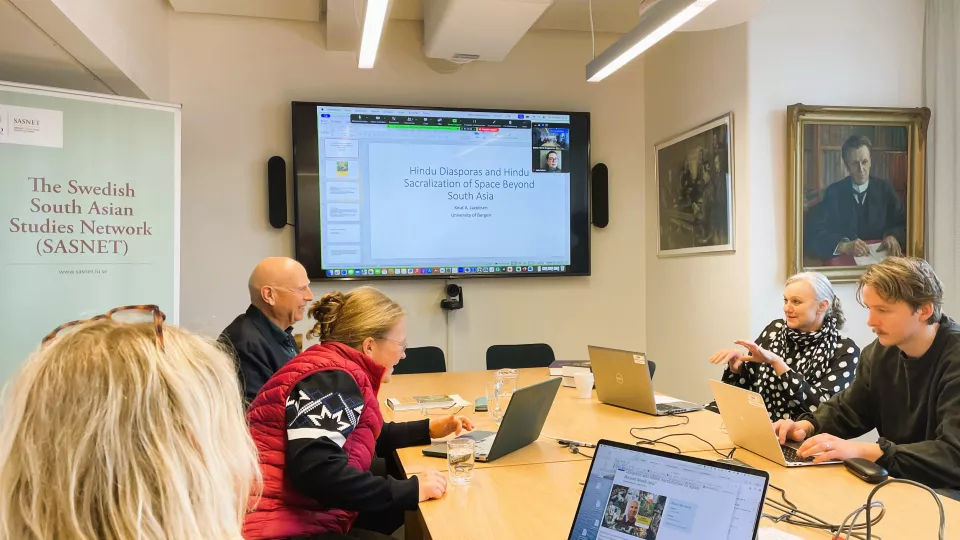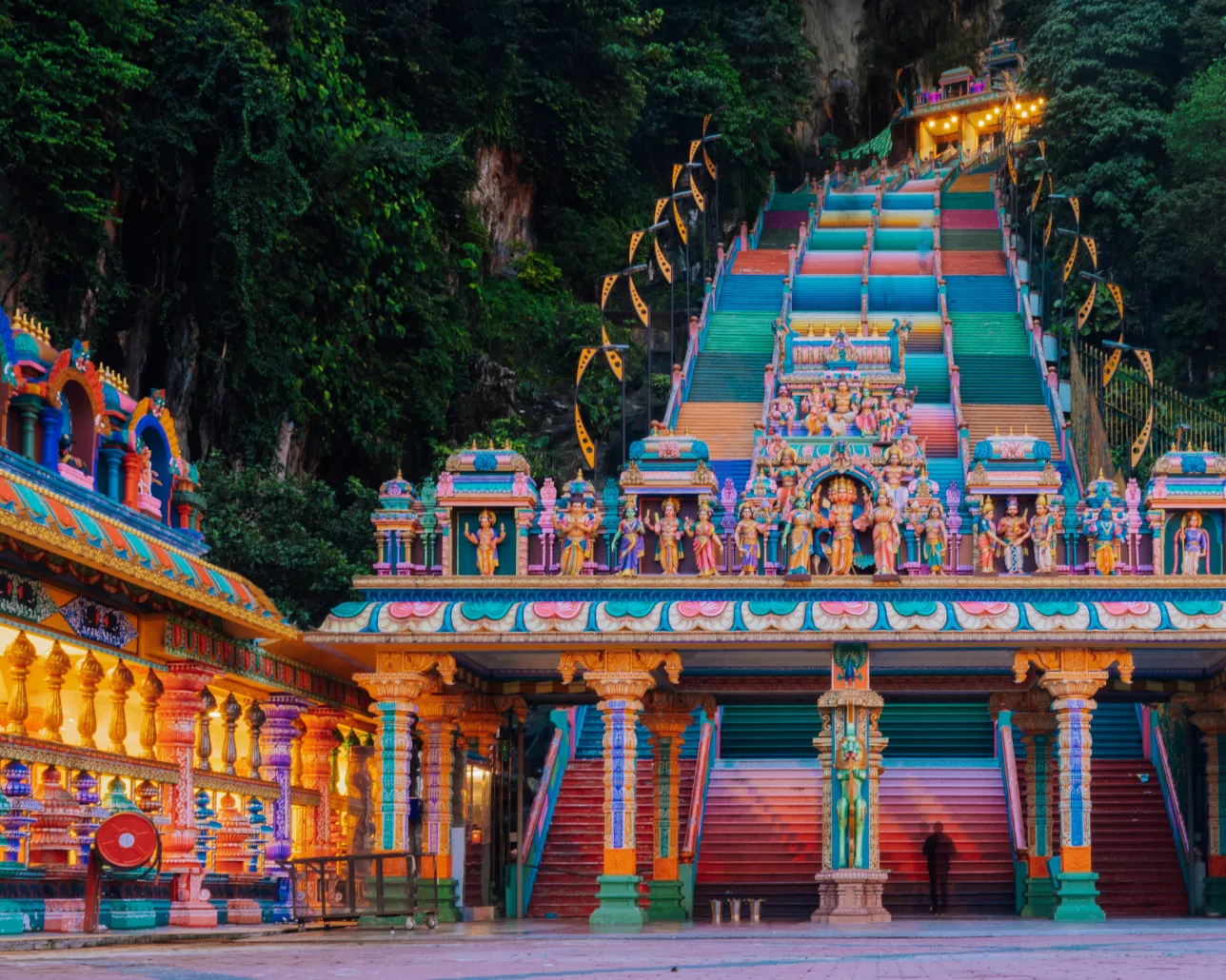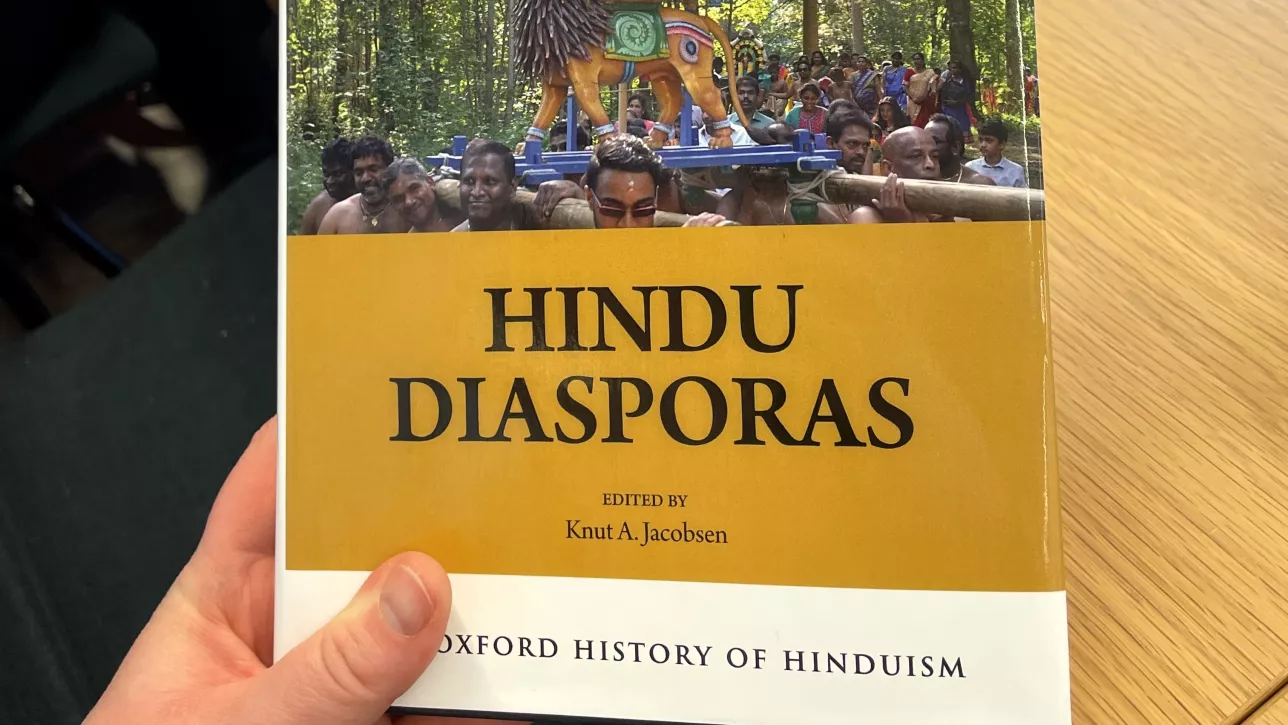From historical hardships to modern resurgence. In a recent co-hosted SASNET seminar, Professor Knut A Jacobsen uncovered the story of Hindu diasporas and their influence on sacred spaces beyond South Asia.
On 20 March, Professor Knut A. Jacobsen from the University of Bergen visited Lund to hold a seminar on the subject of “Hindu Diasporas and Hindu Sacralization of Space Beyond South Asia”. Professor Jacobsen introduced the discussion by delving into the historical context of Hindu diasporas. During the 19th century, many Hindus from lower castes migrated as indentured labour. In a time when slavery was recently abolished in the British empire, the Hindu migrants often replaced the emancipated slaves, particularly in plantation economies, like sugar production.
Due to the multifaceted nature of Hindu migration – both geographically and in time – Professor Knut A. Jacobsen argued that the Hindu diaspora should not be seen as one entity but rather a plurality of diasporas outside of South Asia. In the seminar, he drew attention to present-day demographics in countries such as Mauritius, Fiji, Guyana, Suriname, and Trinidad, where Hindu populations constitute a significant percentage of the populace.
Through challenging times, many Hindu migrants in the diasporas have used their religion as a source of pride and dignity. Historically, however, India’s stance towards its diasporas was marked by ambivalence. After independence in 1947, the people in the diasporas were viewed as disconnected from the motherland and not proper Indians. This dynamic shifted in the 1990s, driven by the resources and influence of upper caste, wealthy, and well-educated diasporic communities, particularly in the United States.
Another paradigm shift highlighted by Professor Knut A. Jacobsen in this seminar, was the emergence of Hindu sacred spaces and pilgrimage destinations outside of India. Traditionally, sacredness within Hinduism was deeply rooted in India’s geography, deemed non-transferrable to other parts of the world. However, in the last decades, this notion has changed. When Hindus travel, the gods and goddesses travel with them. Today, the whole world is thus seen as sacred Hindu geography.
In conclusion, Professor Knut A. Jacobsen’s seminar provided insights into the expanding sacredness of Hinduism beyond South Asia and the role of diasporic communities in this development. Hinduism is currently experiencing a revival in the old diasporas and expansion in the new diasporas. Prominent Hindu sites of pilgrimage outside of South Asia can be found in Germany, Malaysia, the UK, the United States, and many other countries. Examples of this is the Sri Venkateswara Temple in Pittsburgh, the Sri Kamachi Ampal Temple in Hamm, the Batu caves in Malaysia, and in the Skanda Vale in Wales.
This seminar with Professor Knut A. Jacobsen was a colaboration between SASNET and the Centre for Theology and Religious Studies at Lund University.


